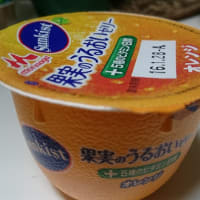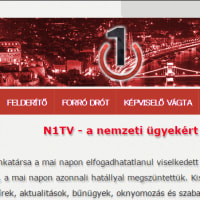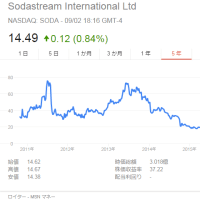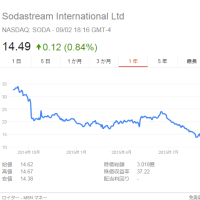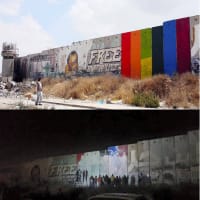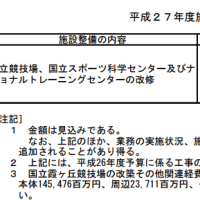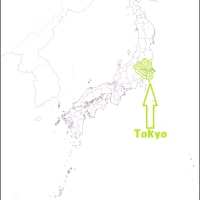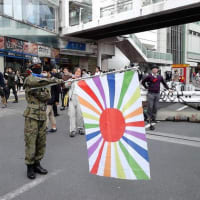何か知らんが、イスラエルがヨルダン川西岸地区で建設を進めている分離壁にLGBTQ運動の象徴となっているレインボー旗(rainbow flag)を描いた芸術家がいた模様。
・Rainbow flag covers Israeli separation wall near Ramallah(2015年6月30日 mondoweiss.com)
これを描いたKhaled Jarrarさんの目的は、パレスチナの人達の自由(を求める運動)への支持を求めることらしい。
以下、2015年6月30日分 mondoweiss.com『Rainbow flag~』から序盤部分を(略)
---- 以下引用 ----
(中略)
Jarrar said in the statement that he painted the flag in order to highlight the continuing oppression and lack of freedom that Palestinians experience under Israeli occupation.
“My goal is to send out a message to the whole world, which is celebrating freedom, about the oppressed people living under military occupation, mainly embodied in the Qalandiya checkpoint and the Apartheid Wall.”
“This work comes in a purely political context to draw the world’s attention of the Palestinian question, the wall, apartheid, and occupation.
(以下略)
---- 引用以上 ----
パレスチナがイスラエルによる占領状態に置かれてることの象徴(というか現実の生活にも影響を与えてる)が分離壁なわけで。
その壁をネタにしてレインボー旗を描くってのは、両者が持つ政治的メッセージの対比を強調するという意味があr(略)
無論、この絵が世間の話題にならないわけがなかった。
実は、このレインボー旗の描かれた場所は、イスラエルの刑務所に拘束されてる人達の釈放を求める絵の隣だった。
困ったことに、レインボー旗はその絵のホンの一部(端っこ)を上書きしていた。
それが原因かどうか不明だが、一部の人達がレインボー旗を白く塗りつぶすという展開に・・・。
↓分離壁に描かれたレインボー旗とそれを白く塗りつぶす様子に関する画面メモ(mondoweiss の記事から引用)

この様子をAP通信が記事にしたのは、ある意味当然の流れと言える。
ただ、その伝え方には大きな問題があった模様。
・Palestinian protesters whitewash rainbow flag from West Bank barrier(2015年6月30日 theguardian.com;AP)
参考までに、2015年6月30日分theguardian.com『Palestinian protesters~』から後半部分を(略)
---- 以下引用 ----
(中略)
Muhammad, who only gave his first name for fear of repercussions, said he helped whitewash the flag because “we cannot promote gay rights”.
Muhammad al-Amleh, a 46-year-old lawyer, approved of the action, saying “it would be shameful to have the flag of gays in our refugee camp”.
Gay Palestinians tend to be secretive about their social lives and some have crossed into Israel to live safely.
A 1951 Jordanian law banning homosexual acts remains in effect in the West Bank, as does a ban in Gaza passed by British authorities in 1936.
Israel, meanwhile, has emerged as one of the world’s most gay-friendly travel destinations, in sharp contrast to the rest of the Middle East where gay people are often persecuted and even killed.
Earlier this month, more than 100,000 people attended a gay pride parade in Tel Aviv.
Officially there is still no same-sex marriage in Israel, primarily because there is no civil marriage of any kind – all Jewish weddings must be conducted through the rabbinate, which considers homosexuality a sin and a violation of Jewish law.
But the state recognises same-sex couples who marry abroad.
Same-sex relations are punishable by death in Iran, Mauritania, Saudi Arabia, Sudan and Yemen.
---- 引用以上 ----
引用部分では、ヨルダン川西岸地区でヨルダンの同性愛を禁じる法律が適用されてると述べてるが、Jarrarさん曰く例の記事はその部分も含めパレスチナ社会に悪い印象を与えるものだという。
・Why I painted a rainbow flag on Israel’s apartheid wall(2015年7月2日 Electronic Intifada)
以下、2015年7月2日分 Electronic Intifada『Why I painted~』から後半部分を(略)
---- 以下引用 ----
(中略)
Misinformation
While painting Israel as exceptionally LGBTQ-friendly, the Associated Press does concede that that “Officially there is still no same-sex marriage in Israel, primarily because there is no civil marriage of any kind.” What this means is that not only can’t Israelis marry Palestinians, but they can’t even marry each other unless they are from the same religion.
The Associated Press goes on to perpetuate another myth, claiming that a “1951 Jordanian law banning homosexual acts remains in effect in the West Bank, as does a ban in Gaza passed by British authorities in 1936.”
But this is incorrect.
The Jordanian Penal Code of 1951 (amended in 1960) does operate in the West Bank, but as the international LGBTQ group ILGA notes in its latest annual report, the law contains “no prohibition on sexual acts between persons of the same sex.”
It is true, nonetheless, that questions of sexual practice as an identity and sexual relations between people of the same sex as well as of different sexes are matters of controversy, contestation and social strictures in Palestinian society as well as in Israeli Jewish society and all over the world.
To ignore all this and bolster the narrative of Palestinians as “backward” and Israelis as “progressive” is the very essence of pinkwashing.
I strongly object to my work being used to fuel this sort of pro-Israeli propaganda.
It boils down to this: Israeli officials have boasted that 100,000 people attended the recent gay pride parade in Tel Aviv.
But even if 100,000 of us Palestinians living in the occupied West Bank or Gaza Strip wanted to join that parade, we would have found the Israeli apartheid wall blocking our way.
(以下略)
---- 引用以上 ----
分離壁に描かれたレインボー旗を消した行動をパレスチナの人達が「あっち側」にいることの象徴として伝えるのは、受け手側にそういう意識が共有されてるからとも言える。
その意味では、AP通信の記事は、パレスチナ社会に対する偏見(反同性愛とか)が根付いてることを意図しない形で示したのだろう。
無論、パレスチナの人達(とりわけLGBTQの人達)にとってはトンだ迷惑だが・・・。
なお、Jarrarさんは、自分のやるべきことについて(こっそりと)語っていた。
2015年7月2日分 Electronic Intifada『Why I painted~』から〆の部分を(略)
---- 以下引用 ----
(中略)
I believe my role as an artist who often works in public spaces is to instigate dialogue.
I stand behind my work — the colors on the apartheid wall added layers to other discussions depicted there that connect peoples and their struggles against oppression throughout history.
By subverting a symbol of freedom and self-determination to apply in broader contexts that include our own plight as Palestinians, I wanted to use the rainbow colors to open a passionate dialogue.
While the work is now whitewashed, the debate continues.
I’m grateful to the many Palestinian journalists, artists, friends and others who are now reporting on the topic and the wonderful, complex conversations they are starting.
I take heart from our ability to tackle difficult subjects and engage in an internal and international dialogue that breaks stereotypes that outsiders and even we Palestinians might hold about our society.
---- 引用以上 ----
これが芸術家だ(謎)。
・Rainbow flag covers Israeli separation wall near Ramallah(2015年6月30日 mondoweiss.com)
これを描いたKhaled Jarrarさんの目的は、パレスチナの人達の自由(を求める運動)への支持を求めることらしい。
以下、2015年6月30日分 mondoweiss.com『Rainbow flag~』から序盤部分を(略)
---- 以下引用 ----
(中略)
Jarrar said in the statement that he painted the flag in order to highlight the continuing oppression and lack of freedom that Palestinians experience under Israeli occupation.
“My goal is to send out a message to the whole world, which is celebrating freedom, about the oppressed people living under military occupation, mainly embodied in the Qalandiya checkpoint and the Apartheid Wall.”
“This work comes in a purely political context to draw the world’s attention of the Palestinian question, the wall, apartheid, and occupation.
(以下略)
---- 引用以上 ----
パレスチナがイスラエルによる占領状態に置かれてることの象徴(というか現実の生活にも影響を与えてる)が分離壁なわけで。
その壁をネタにしてレインボー旗を描くってのは、両者が持つ政治的メッセージの対比を強調するという意味があr(略)
無論、この絵が世間の話題にならないわけがなかった。
実は、このレインボー旗の描かれた場所は、イスラエルの刑務所に拘束されてる人達の釈放を求める絵の隣だった。
困ったことに、レインボー旗はその絵のホンの一部(端っこ)を上書きしていた。
それが原因かどうか不明だが、一部の人達がレインボー旗を白く塗りつぶすという展開に・・・。
↓分離壁に描かれたレインボー旗とそれを白く塗りつぶす様子に関する画面メモ(mondoweiss の記事から引用)

この様子をAP通信が記事にしたのは、ある意味当然の流れと言える。
ただ、その伝え方には大きな問題があった模様。
・Palestinian protesters whitewash rainbow flag from West Bank barrier(2015年6月30日 theguardian.com;AP)
参考までに、2015年6月30日分theguardian.com『Palestinian protesters~』から後半部分を(略)
---- 以下引用 ----
(中略)
Muhammad, who only gave his first name for fear of repercussions, said he helped whitewash the flag because “we cannot promote gay rights”.
Muhammad al-Amleh, a 46-year-old lawyer, approved of the action, saying “it would be shameful to have the flag of gays in our refugee camp”.
Gay Palestinians tend to be secretive about their social lives and some have crossed into Israel to live safely.
A 1951 Jordanian law banning homosexual acts remains in effect in the West Bank, as does a ban in Gaza passed by British authorities in 1936.
Israel, meanwhile, has emerged as one of the world’s most gay-friendly travel destinations, in sharp contrast to the rest of the Middle East where gay people are often persecuted and even killed.
Earlier this month, more than 100,000 people attended a gay pride parade in Tel Aviv.
Officially there is still no same-sex marriage in Israel, primarily because there is no civil marriage of any kind – all Jewish weddings must be conducted through the rabbinate, which considers homosexuality a sin and a violation of Jewish law.
But the state recognises same-sex couples who marry abroad.
Same-sex relations are punishable by death in Iran, Mauritania, Saudi Arabia, Sudan and Yemen.
---- 引用以上 ----
引用部分では、ヨルダン川西岸地区でヨルダンの同性愛を禁じる法律が適用されてると述べてるが、Jarrarさん曰く例の記事はその部分も含めパレスチナ社会に悪い印象を与えるものだという。
・Why I painted a rainbow flag on Israel’s apartheid wall(2015年7月2日 Electronic Intifada)
以下、2015年7月2日分 Electronic Intifada『Why I painted~』から後半部分を(略)
---- 以下引用 ----
(中略)
Misinformation
While painting Israel as exceptionally LGBTQ-friendly, the Associated Press does concede that that “Officially there is still no same-sex marriage in Israel, primarily because there is no civil marriage of any kind.” What this means is that not only can’t Israelis marry Palestinians, but they can’t even marry each other unless they are from the same religion.
The Associated Press goes on to perpetuate another myth, claiming that a “1951 Jordanian law banning homosexual acts remains in effect in the West Bank, as does a ban in Gaza passed by British authorities in 1936.”
But this is incorrect.
The Jordanian Penal Code of 1951 (amended in 1960) does operate in the West Bank, but as the international LGBTQ group ILGA notes in its latest annual report, the law contains “no prohibition on sexual acts between persons of the same sex.”
It is true, nonetheless, that questions of sexual practice as an identity and sexual relations between people of the same sex as well as of different sexes are matters of controversy, contestation and social strictures in Palestinian society as well as in Israeli Jewish society and all over the world.
To ignore all this and bolster the narrative of Palestinians as “backward” and Israelis as “progressive” is the very essence of pinkwashing.
I strongly object to my work being used to fuel this sort of pro-Israeli propaganda.
It boils down to this: Israeli officials have boasted that 100,000 people attended the recent gay pride parade in Tel Aviv.
But even if 100,000 of us Palestinians living in the occupied West Bank or Gaza Strip wanted to join that parade, we would have found the Israeli apartheid wall blocking our way.
(以下略)
---- 引用以上 ----
分離壁に描かれたレインボー旗を消した行動をパレスチナの人達が「あっち側」にいることの象徴として伝えるのは、受け手側にそういう意識が共有されてるからとも言える。
その意味では、AP通信の記事は、パレスチナ社会に対する偏見(反同性愛とか)が根付いてることを意図しない形で示したのだろう。
無論、パレスチナの人達(とりわけLGBTQの人達)にとってはトンだ迷惑だが・・・。
なお、Jarrarさんは、自分のやるべきことについて(こっそりと)語っていた。
2015年7月2日分 Electronic Intifada『Why I painted~』から〆の部分を(略)
---- 以下引用 ----
(中略)
I believe my role as an artist who often works in public spaces is to instigate dialogue.
I stand behind my work — the colors on the apartheid wall added layers to other discussions depicted there that connect peoples and their struggles against oppression throughout history.
By subverting a symbol of freedom and self-determination to apply in broader contexts that include our own plight as Palestinians, I wanted to use the rainbow colors to open a passionate dialogue.
While the work is now whitewashed, the debate continues.
I’m grateful to the many Palestinian journalists, artists, friends and others who are now reporting on the topic and the wonderful, complex conversations they are starting.
I take heart from our ability to tackle difficult subjects and engage in an internal and international dialogue that breaks stereotypes that outsiders and even we Palestinians might hold about our society.
---- 引用以上 ----
これが芸術家だ(謎)。










